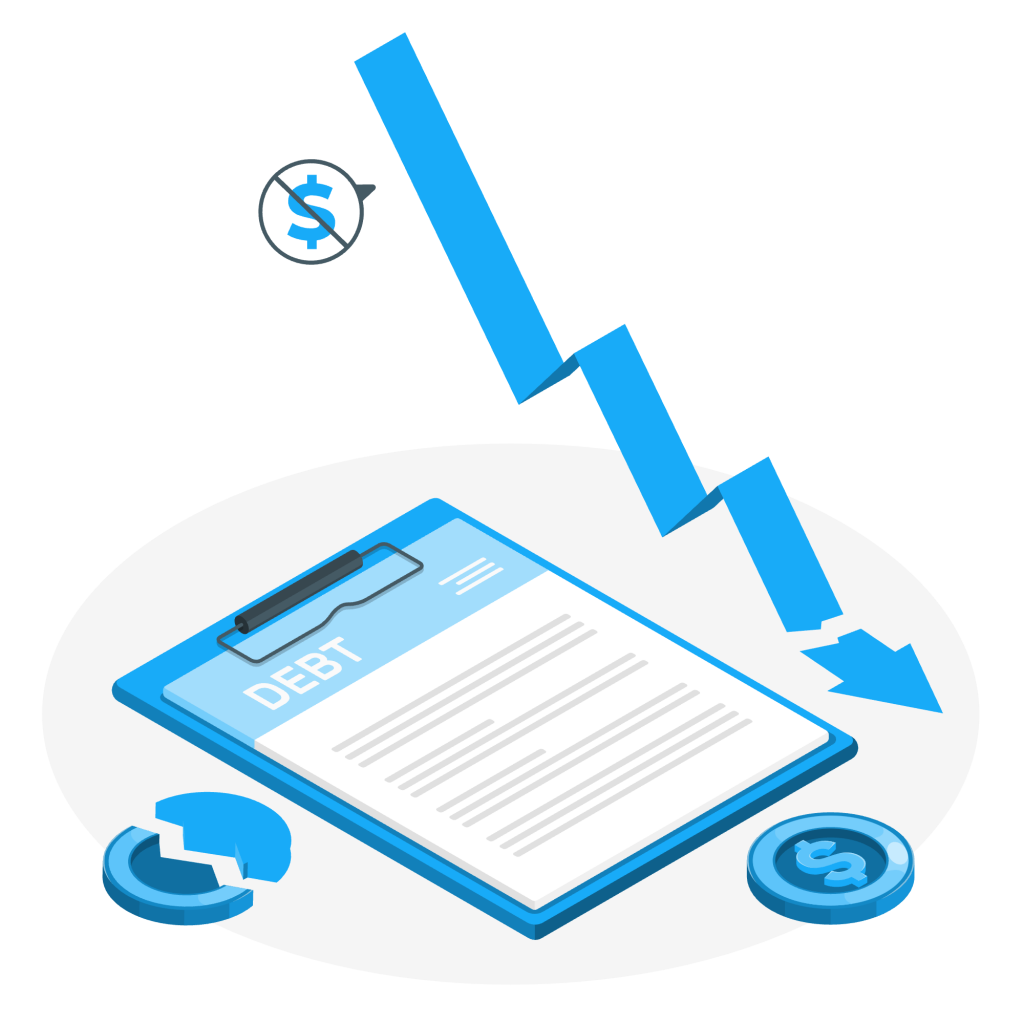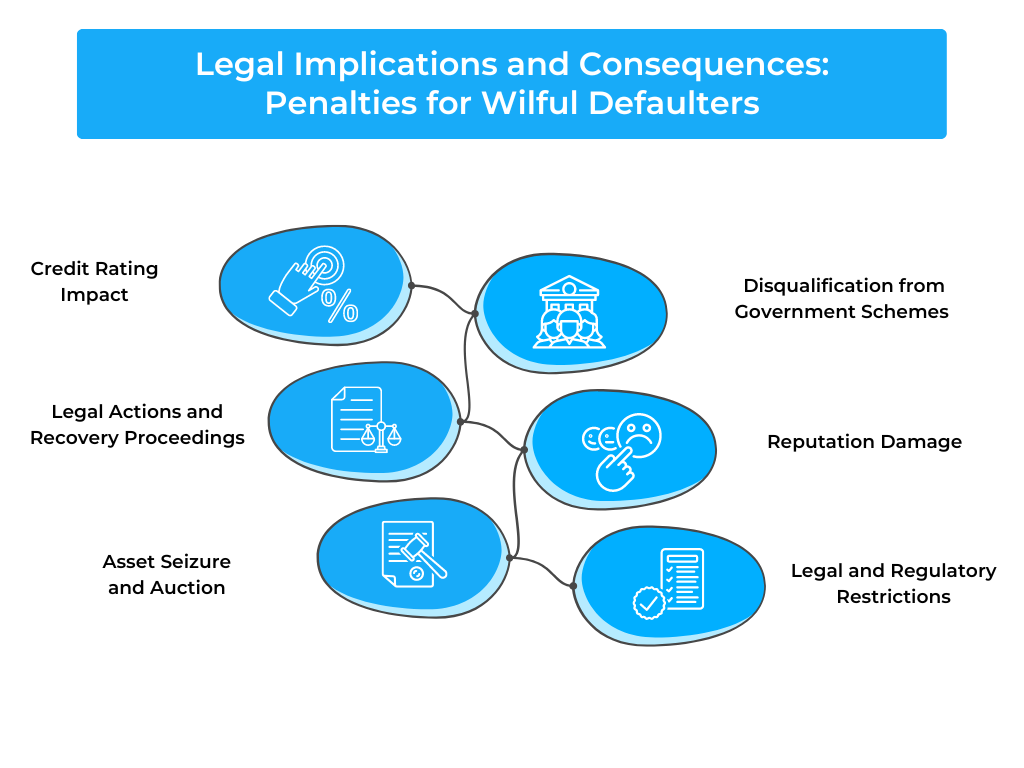Who is a Wilful Defaulter
Definition of a Wilful Defaulter: Understanding the Concept

The term “wilful defaulter” refers to an individual or entity that deliberately and intentionally fails to repay loans or honor their financial obligations despite having the means to do so. It signifies a deliberate act of default rather than a genuine inability to repay. A wilful defaulter is someone who exhibits a clear intention to evade payment, disregarding their moral and legal responsibilities.
To be classified as a wilful defaulter, certain criteria must be met. These typically include factors such as the borrower’s ability to repay the loan, evidence of diversion or siphoning of funds, disposal of assets without the lender’s knowledge or consent, deliberate misrepresentation of information, or fraudulent activities related to the loan. The categorization of an individual or entity as a wilful defaulter is determined through a thorough investigation and assessment by the lender or financial institution based on these criteria.
Identifying wilful defaulters is crucial for financial institutions to protect their interests and maintain the integrity of the lending system. It enables lenders to take appropriate legal actions, recover the outstanding dues, and safeguard the financial stability of the institution.
Criteria for Determining Wilful Default: Key Factors Considered
When determining whether a borrower can be classified as a wilful defaulter, several key factors are taken into account. These factors help financial institutions assess the borrower’s intent and ability to repay the loan. While the specific criteria may vary across jurisdictions and institutions, some common considerations include:
- Ability to Repay: The borrower’s financial capacity to repay the loan is evaluated, including their income, assets, and cash flow. If the borrower has the means to meet their financial obligations but intentionally avoids repayment, it may indicate wilful default.
- Diversion of Funds: Evidence of diversion or siphoning of loan funds for purposes other than the stated use can be a significant factor in determining wilful default. If the borrower utilizes the funds for personal gain or other unauthorized activities, it raises suspicions of intentional non-payment.
- Asset Disposal: If the borrower disposes of pledged assets without the lender’s knowledge or consent, it may indicate an intention to hinder the lender’s ability to recover the outstanding dues. Such unauthorized asset disposal can be indicative of wilful default.
- Fraudulent Practices: Engaging in fraudulent activities related to the loan, such as submitting false documents or misrepresenting information, is a strong indication of wilful default. It demonstrates a deliberate attempt to deceive the lender and evade repayment.
- Lack of Cooperation: Non-cooperation with the lender’s efforts to resolve the default and negotiate repayment terms can be considered as evidence of wilful default. This includes avoiding communication, failing to provide requested information, or deliberately obstructing the recovery process.
- Legal Proceedings: If the borrower has been involved in legal actions related to loan default, such as loan restructuring or recovery proceedings, and still refuses to comply with the terms or court orders, it may support the classification of wilful default.
Intentional Non-Payment: Establishing the Willful Aspect
Establishing the willful aspect of intentional non-payment is a critical factor in determining whether a borrower can be classified as a wilful defaulter. It involves examining the borrower’s actions and intentions behind their failure to repay the loan. While genuine financial hardships may lead to default, intentional non-payment goes beyond a mere inability to repay and signifies a deliberate act of defiance or avoidance.
To establish the willful aspect, financial institutions evaluate various indicators. These may include the borrower’s behavior and conduct, such as ignoring repayment reminders, evading communication with the lender, or intentionally delaying or stalling the repayment process. Persistent non-payment without any valid explanation or effort to rectify the default reinforces the notion of intentional non-payment.
Additionally, lenders scrutinize the borrower’s financial transactions and activities to identify any evidence of diversion of funds or siphoning of loan proceeds. If the borrower utilizes the loan funds for personal gain, unrelated investments, or undisclosed purposes instead of fulfilling the loan obligations, it raises suspicions of intentional non-payment.
Default Amount and Repayment Capacity: Assessing Financial Ability
Assessing the default amount and repayment capacity of a borrower is a crucial step in determining their ability to repay the loan and identifying any intentional non-payment. Financial institutions carefully analyze the borrower’s financial situation and evaluate their capacity to honor their financial obligations.
Firstly, the default amount is considered to understand the extent of the borrower’s unpaid dues. This includes assessing the outstanding principal, interest, penalties, and any other charges accrued due to the default. By quantifying the default amount, lenders can evaluate the severity of the default and its impact on the overall loan repayment.
Secondly, the borrower’s repayment capacity is thoroughly assessed. This involves evaluating their income, expenses, and financial obligations to determine whether they have the financial means to meet their repayment obligations. Lenders may analyze factors such as employment stability, income sources, debt-to-income ratio, and existing financial commitments. If the borrower has the financial ability to repay the loan but intentionally avoids doing so, it suggests a willful default.
Legal Implications and Consequences: Penalties for Wilful Defaulters

Wilful defaulters face significant legal implications and consequences for their intentional non-payment of loans. These penalties are imposed to deter such behavior and ensure accountability in the lending system. While the specific penalties may vary across jurisdictions, some common consequences for wilful defaulters include:
- Credit Rating Impact: Wilful defaulters may experience a severe negative impact on their credit rating or credit score. This can hinder their ability to obtain future loans or credit facilities, as lenders consider their creditworthiness and repayment history.
- Legal Actions and Recovery Proceedings: Financial institutions have the right to initiate legal actions against wilful defaulters. This can include filing a lawsuit to recover the outstanding dues, obtaining a court judgment, and seeking enforcement measures such as property attachment or garnishment of wages.
- Asset Seizure and Auction: In cases where wilful defaulters have pledged assets as collateral, financial institutions may exercise their right to seize and sell these assets to recover the outstanding dues. The proceeds from the asset auction are used towards loan repayment.
- Disqualification from Government Schemes and Benefits: Wilful defaulters may be disqualified from accessing certain government schemes, subsidies, or benefits. This can impact their eligibility for housing loans, educational loans, or other financial support provided by the government.
- Reputation Damage: Being labeled as a wilful defaulter can tarnish an individual or entity’s reputation in the financial industry. It may affect their ability to engage in future business transactions and may deter potential business partners or lenders from associating with them.
- Legal and Regulatory Restrictions: Wilful defaulters may face restrictions imposed by regulatory bodies, such as being barred from holding key positions in financial institutions or facing limitations on their business activities within the financial sector.
Prevention and Remedies: Measures to Address Wilful Default
To address wilful default and mitigate the risks associated with intentional non-payment, financial institutions implement preventive measures and remedies. These measures aim to deter wilful defaulters, protect the interests of lenders, and ensure a healthy lending environment. Some key prevention and remedy measures include:
- Stringent Due Diligence: Financial institutions conduct thorough due diligence before granting loans to assess the borrower’s creditworthiness, repayment capacity, and credibility. This includes evaluating their financial history, income sources, and collateral value. Rigorous due diligence helps minimize the chances of lending to potential wilful defaulters.
- Loan Agreement and Documentation: Clear and comprehensive loan agreements are drafted, highlighting the borrower’s obligations, repayment terms, and consequences of default. Adequate documentation ensures that both parties are aware of their rights and responsibilities, making it easier to take legal actions in case of wilful default.
- Regular Monitoring and Communication: Financial institutions monitor loan accounts regularly and maintain regular communication with borrowers. Timely reminders, statements, and follow-ups help detect any potential signs of wilful default and allow for prompt actions to address the issue.
- Asset Valuation and Collateral Management: Accurate valuation of assets pledged as collateral is crucial to ensure their adequacy and prevent potential asset diversion or disposal. Regular monitoring of collateral helps protect the lender’s interests and provides recourse in case of wilful default.
- Recovery and Legal Actions: In the event of wilful default, financial institutions initiate appropriate recovery actions. This may involve engaging collection agencies, filing lawsuits, obtaining court judgments, or enforcing asset seizure and auction to recover the outstanding dues.
- Credit Reporting and Information Sharing: Collaboration between financial institutions and credit bureaus enables the sharing of credit information, including wilful default records. This helps create a comprehensive credit history for borrowers, discouraging wilful default and promoting responsible borrowing behavior.
Conclusion
In conclusion, addressing wilful default is crucial for maintaining the stability and integrity of the lending system. By understanding the criteria for determining wilful default, the intentional non-payment aspect, and the legal implications involved, financial institutions can take appropriate actions against defaulters. Implementing preventive measures, such as stringent due diligence and effective communication, can help mitigate the risks associated with wilful default. Additionally, efficient remedies including legal actions, asset seizure, and credit reporting systems play a pivotal role in discouraging intentional non-payment and promoting responsible borrowing practices. By collectively adopting these measures, lenders can strive towards a more transparent and accountable lending environment.